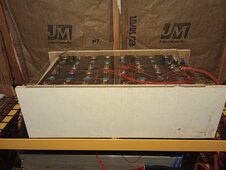Hello,
I am new to the forum and a noob to the solar realm. Spent some time researching this forum for answers but decided to post for a more specific response from all of you in the know. I am in the early stages of planning a DIY off grid solar build for my rural property. I am looking for recommendations of which brand/type/model of inverters and solar charge controllers to go with. I would like to see your thoughts based upon the below criteria:
I appreciate any thoughts on the matter.
I am new to the forum and a noob to the solar realm. Spent some time researching this forum for answers but decided to post for a more specific response from all of you in the know. I am in the early stages of planning a DIY off grid solar build for my rural property. I am looking for recommendations of which brand/type/model of inverters and solar charge controllers to go with. I would like to see your thoughts based upon the below criteria:
- DIY friendly (this will be my first install, but I do have technical aptitude) install and programming. I know the Sol-Ark and other All-in ones are easier and faster to install, but I am willing to do a more complicated and longer install if the end goal is a better product and setup.
- I plan on starting with 8-12KW of Solar PV input with the option of expansion in the future. These will be roof top mounted.
- Batteries will be Lithium with 60KWH of capacity and the option of expansion in the future.
- Going off-of my current KWH usage I am basing the above specs off of an average of 740KWH/Month or 25KWH/Day with a possible one-month spike in the winter of 1200KWH/Month (I live in WY)
- I need an inverter that has the capability to do an auto start for a diesel generator. I plan on using a backup diesel generator to help supplement by energy needs in the winter until I can afford more PV panels and batteries.
- An inverter that can handle surge and big draws from big starts like air compressor, 240V welder, shop tools, electric dryer, 240v well pump, etc. I have heard that the High Frequency transformer less inverters struggle with this as well as leg imbalances whereas Low Frequency Transformer types do not.
- This is for an off-grid application, but there is a slim chance in the future for grid tie so it may make sense to have the option for grid tie backup and pass through.
- An Inverter company that has good tech support or distributor that can help with programming issues and the likes.
- Longevity and build quality (I don’t want to have to do this again for many years to come and I don’t want something I have to tinker with once it is setup, I want it to just run).
- I don’t care if it is an All in one or not.
- Size and space don’t matter has I have the room.
- Price is always important, but I am willing to pay more if it is a better product and it make sense too.
I appreciate any thoughts on the matter.





